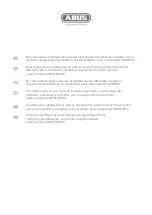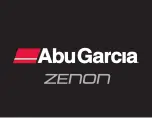
370801.11
13
vetus®
Installation manual E-POD electric propulsion
ENGLISH
4.5 Battery installation
The following points must be taken into account when installing the
batteries:
W
arninG
Always follow the warning and safety instructions as stated
in the battery manual.
- Batteries must be installed in a dry, well-ventilated space.
- Ventilation is important because small quantities of explosive gas
can be produced while charging. If necessary, install a system of
forced ventilation.
- Always install batteries above the bilge water level.
- Batteries must be fixed securely to prevent damage to the casing.
Preferably fit batteries in a tray.
- Ambient temperature may not exceed 60 degrees C (140 de-
grees F). Never place batteries in direct sunlight!
- The batteries must be easily accessible for maintenance.
- Never fit switches or other electrical equipment in the vicinity of
batteries; possible sparks could cause an explosion.
- Prevent metal objects from accidentally coming into contact with
a battery terminal.
4.6 Main current cables
• Connect the motor to the batteries as shown in the diagrams, see
.
• Fit the fuse supplied and a main switch in the positive (+) cable.
W
arninG
When calculating the cable cross-sections, take into account a
maximum permissible voltage drop of 5%.
Never use smaller cable cross-sections than indicated in the
table below.
Battery cable
70 mm
2
Fuse
300 A
When the batteries are not being used or not charged, it is recom-
mended that they are disconnected from each other using an isolat-
ing switch.
W
arninG
NEVER fit the fuse, main switch or isolating switches in the
battery space!
Take the following points into account when installing the battery
cables:
- Fit the cables in the shortest possible way from batteries to motor.
- With a long cable length, bundle the ‘+’ and ‘-’ cables together.
- Install the ‘+’ and ‘-’ preferably in such a way that the total length of
each cable is the same. This ensures an equal load on each battery.
- Ensure that the cables do not run through any bilge water.
- Ensure that the cables cannot come into contact with any sharp
edges.
- Fix the cables in such a way to prevent wear or abrasion caused
by vibration.
- Use cable terminals to connect the cables to switches, fuse and
motor.
- Preferably fit cable terminals by crimping.
- Use good quality battery terminals to connect the cables to the
battery posts.
- Tighten bolts securely to ensure a good connection.
- Do not use spring-loaded battery terminals!
- Grease the battery posts and battery terminals with Vaseline to
prevent corrosion.
- Never change over the connector cables.
- Before leaving, check the charge status of the batteries just as you
would check the tank capacity of a diesel engine.
W
arninG
Changing over the plus (+) and minus (-) connections will
cause irreparable damage to the installation.
W
arninG
NEVER short-circuit the batteries by connecting the plus (+)
pole to the minus (-) pole.
Connecting the main current cables
• Switch all electrical equipment off.
• Prevent any short circuits caused by tools, for example.
• Connect the positive (+) cable first, then the negative.
4.7 Internal fuse
There is an internal fuse on the controller in the connection box.
This fuse protects the controller and the motor against short circuits
or overload.
N
ote
Always replace a defect fuse by a fuse of the same value.














































